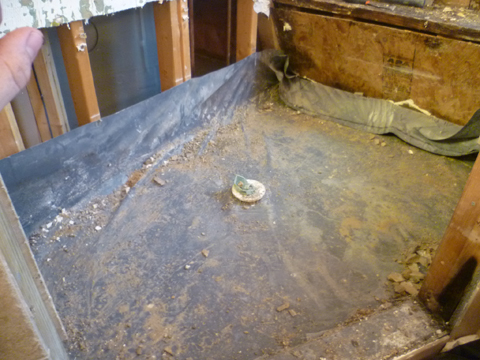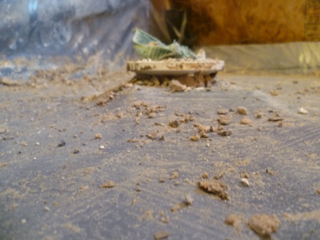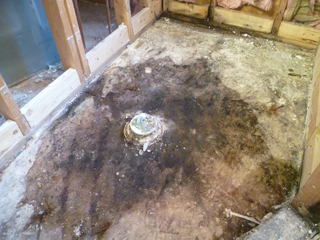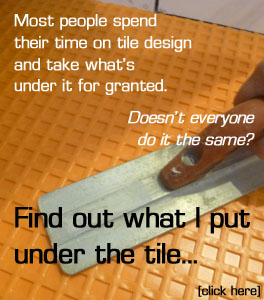 I’ve had a couple of appointments lately where I’ve found myself explaining some of the common problems with other tile shower installations. For a number of reasons, I don’t install showers using a pvc liner paired with a clamping drain. It’s a widespread product, but I much prefer the Kerdi system that results in a waterproof and nearly vaporproof shower (the whole thing, not just the bottom!) Anyway, I’ve torn out a few showers and there is one big problem that they all had in common besides leaking- the pvc liner was installed directly on the level subfloor. Let me explain.
I’ve had a couple of appointments lately where I’ve found myself explaining some of the common problems with other tile shower installations. For a number of reasons, I don’t install showers using a pvc liner paired with a clamping drain. It’s a widespread product, but I much prefer the Kerdi system that results in a waterproof and nearly vaporproof shower (the whole thing, not just the bottom!) Anyway, I’ve torn out a few showers and there is one big problem that they all had in common besides leaking- the pvc liner was installed directly on the level subfloor. Let me explain.
Let’s start with the basics. Water runs downhill. 
Every tile shower I’ve torn out has had the pvc liner laid directly on top of the flat plywood subfloor with the sloped tile bed above it. The problem is that grout and mortar are NOT waterproof. Water seeps through the tile and the mortar below until it gets to the liner. If the liner is flat water just pools there and never leaves. Without a sloped surface, it’s happy where it is! This results in mold and mildew problems and will eventually leak.
The correct way to install a liner is to first install the sloped mortar bed and THEN install the liner above it. I’ve NEVER seen it installed this way, and a tile expert I was talking with recently who has seen a lifetime of tile showers said that he thought that 90% of them were installed incorrectly.
This is starting to sound like a rant, and I apologize.
 The photo above is of a shower floor that I ripped out to repair. It was only a few years old and leaking in several places. You can see that it is flat and just laying on the subfloor. The clamping drain (left) that is used with this liner actually attaches to the floor, meaning it actually raises the liner up in the middle. The result is that this shower always had at least 3/8″ or more of water pooling the the bottom of the mortar bed under the tile. Further, if the tiny weep holes on the drain are clogged for some reason, there’s even more water accumulating under the tile.
The photo above is of a shower floor that I ripped out to repair. It was only a few years old and leaking in several places. You can see that it is flat and just laying on the subfloor. The clamping drain (left) that is used with this liner actually attaches to the floor, meaning it actually raises the liner up in the middle. The result is that this shower always had at least 3/8″ or more of water pooling the the bottom of the mortar bed under the tile. Further, if the tiny weep holes on the drain are clogged for some reason, there’s even more water accumulating under the tile.
I had one client who was obsessive about cleaning her shower, but she couldn’t win against the mold that was in the grout. It’s very likely that water was accumulating below and the staining was related to this, rather than anything on the surface that she could clean.
Why would so many installers do it incorrectly? The main reason is that to do it right you have to build two mortar beds. One below the liner that is sloped, and other above the liner that the tile will attach to. This extra step takes more time, likely an additional day to install and let cure before you can tile over it.
 Here’s a picture of what was under that leaky shower liner. Not pretty.
Here’s a picture of what was under that leaky shower liner. Not pretty.
It’s so important to do it right the first time and to use the best system for the job.









